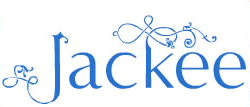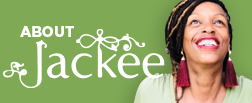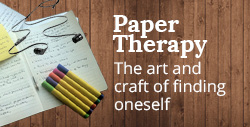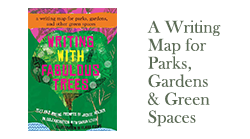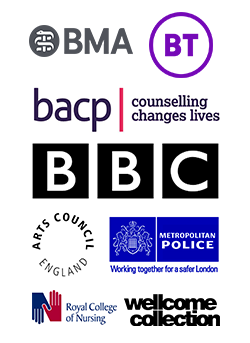Coaching
Saturday, February 9th, 2013

On the first day of training internal coaches we focus on the cultivation of Mindfulness. The Eastern traditions and teachings of Zen Buddhism are steeped in the ways and practices of Mindfulness that offer coaches a range of ways to prepare for coaching in a way that brings present awareness to the coaching.
One of the early exercises we engage coaches in is to invite coaches to consider the ways in which they empty the mind of clutter and distractions on a daily basis and make what I call the Switch.
The switch is where you make the transition from Busy Mind to Quiet Mind. It’s the practice of preparing for coaching sessions where the coach consciously reduces as much interference and distractions from the mind which will allow them to be as fully present and available in the session as they can possibly be. For many of the internal coaches we work with this is not an easy task.
Many are working overloaded schedules and timetables. Most never have time for a lunch break to eat properly let alone digest their food and alone slow down. Many wake up and the first thing they do is reach or the mobile or lap tops to check incoming emails before they’ve even had a chance to breathe into the day.
Don’t worry I’ve found myself caught up in this cycle myself and have had to work hard at reprogramming myself constantly to do my meditation first, or to take several deep breaths which I really enjoy doing or going straight to my notebook for a meditative writing practice of Morning pages or free writing.
When I put any of these practices at the front of the day I always enter into the days work differently and in a better frame of mind. I also incorporate the same practices to help me make the switch as I coach individuals throughout the week.
This question of making the switch is an important one for without a conscious cultivation of emptying the mind coaches are in danger of surface level conversations, mediocre use of coaching tools and techniques and poor quality of relationships with coaches.
Making the switch holds many benefits and gains for the coaching process. Switching creates more spaciousness for quality observation. It improves the degrees of attention to non-verbal cues and intuitive intelligence, enables connections to sensory data to be more readily accessible and promotes better quality thinking both creatively and intellectually.
By making the switch an integral part of your own coaching practice you’re best positioned to model this with your coaching clients and share the differences this will make for levels of satisfaction and productivity.
With busy schedules and demands coaches can be creative in finding ways of making that switch that are easy and doable.
One way to begin this practice is by listing what you could do in a 15 minute period before a coaching session that would help you make the switch from busy mind to quiet mind.
Next write what you will do into your diary. Writing it down does make a difference.
You’re more likely to carry out the switch when you write it down.
Making the Switch practices:
- Take a walk
- Write in my journal
- Take some deep breaths
- Have lunch
- Get some fresh air
- Do some body stretches
- Read a poem
- Sit quietly for ten minutes
- Do some free writing
- Go for a swim or a run
- Enjoy a mindful cup of tea
- Schedule an extra 15 minutes before the start of a coaching session
Use the questions below to start defining your Switch practices:
- What could you do within a 15-minute window of time that would help you make the switch from Busy Mind to Quiet Mind?
- What is your experience of your coaching when you make time to consciously switch from busy mind to quiet mind?
- What are the most common reasons that get in the way of you making the switch?
- What is the switch practice you most enjoy?
- What switch practice will you start with?
1 Comment
Monday, February 4th, 2013

What She Said:
The only cure
I know
is a good ceremony,
that’s what she said.
Marmon Silko, L. (1977)
Spare a moment to consider the many different ways you could close and wrap up your coaching sessions that has meaning.
Reflecting back on the many endings I’ve had with clients the ones that seem to stick with clients were the ones where we didn’t just talk or write about the experience in order to evaluate it’s effectiveness but where they did something practical engaging the body where they could physically communicate their reflections of the coaching experience beyond the spoken or written word.
One memory of a personal experience of an ending on a training course comes to mind. It was the final morning of a ten-week personal development course, which ran from the unusual times of 6am – 8.30am twice a week. On our final session we were requested to create a closing ceremony that expressed our experiences on the course.
Rudy a budding actress invited us all to step outside for her ending onto the streets opposite Tower Bridge holding a bunch of multi-coloured balloons. Before she let the bunch of balloons go Rudy shared what the course had done for her, a funny story about how she had arrived at deciding on the balloons ceremony and ending with telling us about each of her goals she’d summarized on each balloon which she was about to release into the vast London skyline.
The memory of watching Rudy release her balloons into the early morning skyline and watching her balloons climb high above the clutches of the Tower of London is as fresh in my body and mind as if it were yesterday.
But perhaps even more was the primal physicality of the moment, the body and emotional shifts we watched Rudy go through as each Wish balloon was released into the air. The crisp, early morning London air, the hum of the morning traffic, the charcoal grey stone work of the Tower of London, the pale blue sky about to be set alight by the swatch of colour floating into her clutches. All of this brought the senses alive and engaged all of us fully in the moment.
Years later I saw Rudy in an Indian restaurant in Greenwich. We had a lovely exchange and in a short space of time I learnt about how many of her wishes that had been etched across each of those balloons had manifested in the most wonderful ways in her life.
Using physical activities by engaging the body often has greater impact than the traditional evaluation method coaches automatically switch to.
There is the danger that the often routine habits of verbal and written evaluations provides feedback that is safe and is sometimes more reflective of what the coachee feels the coach wants to hear. But when you introduce activities that help consolidate the client experience of the coaching which is client focused then the outcome is often far more reaching and beneficial to the coachee.
One way we can make this happen is to invite the coachee to consider how to make a good ending for themselves and this often requires thinking and acting outside of the box. Ceremony allows the learning from the experience to not just be thought about but to be felt in what could be described as an embodied way.
Here are two examples of wrap up sessions that could be creatively incorporated as ending ceremonies with your coachee’s.
Coaching Release Ceremony
You will need:
- Pack of multi coloured party balloons
- Permanent marker pens
- Pack of luggage or gift tags
Release ceremony
- Invite the coachee to reflect on the challenges and issues they originally arrived at the coaching wanting to work on
- Which of those themes feels like there has been a shift? What evidence supports this?
- Ask the coachee to specifically state what they are now able to release or let go of as a result of coaching?
- Invite the coachee to write one word describing what they’re now willing to let go of on each balloon. Alternatively have them write the issues down on a luggage or gift tag and tie this onto each balloon.
- Find an outdoor space or window (please be mindful of health and safety) and release the balloons one by one into the air.
- Watch the balloons until they disappear.
Goals Release Ceremony
- Follow the same steps but with this ceremony focus on what the new goals and aspirations are and write each goal separately on an individual balloon or luggage or gift tag and release in the same way.
- Not wanting to go outside try Michael Atavar’s suggestion and stick a pin in each balloon and make them go pop.
Other Wrap Up Options
- Invite the coachee to collage their experience of the coaching
- Draw or sketch three images, which reflects the experience of the coaching
- Bring in a small bag of random objects and invite the coachee to choose three objects and share how they reflect their experience and what they are taking away from the coaching
- Gather a selection of magazine images and postcards and invite the coachee to select images that represents their evaluation of the programme
- Invite the coachee to complete a video or audio feedback and discuss together as part of the evaluation of the coaching
- Ask the coachee what three books would they take on a desert island that would support their ongoing personal and professional development?
- Gift your coachee a recommended reading list based on your experience of working with them
- Create Evaluation forms with images on
- Freewrite your feedback
What other creative ways have you wrapped up your coaching sessions?
No Comments
Monday, January 28th, 2013
 ” My interpretation is that intuition is the mountain inside us, it’s our certainty. It lets us go, it brings us back. It’s our flowing solidity. It can be called upon by keeping still, by coming back to our mountain place. Being solid inside ourselves. Intuition keeps us firm, grounded, earthed – just like a mountain.”
” My interpretation is that intuition is the mountain inside us, it’s our certainty. It lets us go, it brings us back. It’s our flowing solidity. It can be called upon by keeping still, by coming back to our mountain place. Being solid inside ourselves. Intuition keeps us firm, grounded, earthed – just like a mountain.”
- Atavar, M. (2009)
More wisdom from the wonderful Michael Atavar from his book, How To Be An Artist that could be retitled, How To Be A Coach. I like the way Atavar describes Intuition as a mountain.
Intuition is a skill that coaches will do well with developing and becoming more confident and skilful at being more intuitive in their coaching conversations. One way of viewing Intuition is that it is a high level of listening, hearing, sensing and responding to the less overt signs and signals communicated between two individuals in a coaching conversation. Intuition as a skill won’t always have the evidence to back up what you are thinking or feeling.
Intuition reads into and connects with energy, the sort of body signals and messages that are not easily transported into the traditional coaching models of Coaching like GROW and OSKAR.
Intuition builds on a coach’s ability to work in the field of not knowing, knowing that by remaining open you’ll be more receptive to new and often different levels of information and data beyond the data accessed from the rational, logical mind.
Last week I worked with client who in the process of our conversation said one word in amongst her comments and conversations that caused a reaction in my body. Rather than dwell on the reasons for this I simply wrote the word down and continued listening. Twenty minutes later it became clear why that particular word resonated in my body the way it did.
I didn’t need to jump at this point and make an observation or ask a question to let the coachee know about the intuitive response that I’d felt and connected with. It was far more valuable for her to make those connections for herself, to be guided by her own inner-tuition and for the recognition of the congruence that manifested for both of us to reveal itself in the session in the way that meant she took full ownership of her own connections and insights.
There is that danger that by being over zealous with our intuitive noticings and hunches we set ourselves up as the experts, the ones with the insights and knowledge and we rob our coachee’s of their own power and intuitive intelligence.
I am often asked by coaches who feel their intuitive intelligence is under developed how to become stronger in this area. I believe everyone is intuitive and some people simply need to tune into their intuition on a more conscious and aware level.
Try this: For one week pay special attention and focus to your own intuitive thoughts and hunches. This means paying attention to imagery, sounds, sensations, feelings and thoughts that may be wrapped up in subtle signals. You might choose to act on them or you might not.
At the end of your week review your list of intuitive thoughts and hunches and total up how many of your intuitive thoughts or hunches on your list turned out to be correct. This is the easiest and simplest way of deciphering how well your intuition works.
- For one week practice making more intuitive decisions and choices.
- Choose your daily outfit for one week intuitively.
- Choose your daily meals for one week based on intuitive choices.
- For one week call friends and family as soon as you receive an intuitive nudge.
- Create a quiet space or quiet mind to make your choices.
Doing more of this noticing will also help you with working out how your intuition signals or speaks to you.
- Does it respond by generating sensations or reactions in your body?
- Does it speak to you through internal chatter or a whisper?
- Does your body temperature rise or fall?
Getting to know your own body’s intuitive way of getting your attention will help grow your confidence and competence in this area.
Your intuition is often a symptom of your own ingrained wisdom and knowledge that you are willing to unleash. Intuition works well and is receptive when you’re relaxed and in a calm state.
No Comments
Saturday, January 19th, 2013
 Since Christmas I’ve been walking around with the book How To Be An Artist by Michael Atavar curled up in the bottom of my bag. It’s a gem of a book. Avatar has a light touch that goes deep. He’s a master teacher about creativity, which he delivers in big massive chunks of wisdom all the way through the book. The book is spacious, no cramped lines and chapters here. He’s perceptive, compassionate and on the ball.
Since Christmas I’ve been walking around with the book How To Be An Artist by Michael Atavar curled up in the bottom of my bag. It’s a gem of a book. Avatar has a light touch that goes deep. He’s a master teacher about creativity, which he delivers in big massive chunks of wisdom all the way through the book. The book is spacious, no cramped lines and chapters here. He’s perceptive, compassionate and on the ball.
Today I’m reading a chapter Go where the energy is and it got me thinking and my thoughts led me to start scribbling down some of those thoughts.
Many of us struggle with knowing that there are some people we like and get on with and the feeling is mutual and then there are people who don’t like us and we wonder why they don’t like us and we can sometimes expend wasted energy trying to get them, most often unsuccessfully to like or notice us.
Take for instance in my work as a coach trainer. There will be delegates who are naturally drawn to my less formal style of facilitating and others who will prefer the more directive and structured styles of some of my colleagues. Now, do I spend my time trying to win over the approval of those who prefer the latter style or do I stick with focusing my energy towards those who are enjoying the way in which I facilitate and deliver and recognize you can’t win them all?
In his chapter Go With The Energy Atavar suggests, “Go to people you feel comfortable with and who like you. Don’t go towards people who don’t like you. You sometimes believe that you can convert them. You can’t. Steer clear.” I couldn’t agree more.
He goes onto to share a personal example, which is worth sharing here as I suspect many of you will have had a similar experience.
“Once I was told by a colleague to put a well known curator on my mailing list. I didn’t really have a good feeling about this. My intuition was right – the first time I sent out an email shot advertising a recent exhibition, she asked to be unsubscribed. I immediately took her off the list.” (Atavar, 2009)
The curator was clearly not a natural member of Atavar’s tribe. As soon as I was halfway through reading How To Be An Artist I couldn’t wait and went on line to order more of what he has written. I was what I call one of Atavar’s best clients. I was naturally attracted and engaged with what Atavar has on offer and needed little persuasion or encouragement to connect in.
I first came across the word “tribes” in relation to online audiences and communities through the work of Seth Godin. Godin in a book of the same name describes, “ a tribe is a group of people connected to one another, connected to a leader, and connected to an idea. . . . .People want connection and growth and something new.” (Godin, 2008)
Where in the past tribes needed to be local now they can be global making it even more feasible to go where the energy is. Why focus on the one curator who doesn’t get you when there are probably a thousand curators worldwide containing ten or even five who maybe the one’s who do just get you?
And neither is this all about a number’s game. The other day I took a quick look at the number of people following me on my Twitter account. It was I thought a reasonable figure of 400 people until I checked in with a couple of my peers Twitter accounts and realized they had in the region of a thousand plus followers. Suddenly my 400 followers felt like peanuts. I had to quickly reel myself back in reminding myself that it’s quality not quantity.
However the episode reminded me of just how easy it is to fall into the trap of being seduced into the numbers game. The irony is your tribe doesn’t need to be huge to be effective. Whether a thousand followers or 40 followers consider the kinds of relationships you have with your tribe. That’s what really counts. It’s better to expend your energy calling in those who feel connected to what you offer than scattering your energies far and wide with little meaning.
Take on board the words of Atavar, “Stay in your own good space and be yourself.” (Atavar, 2009)
Answer the questions below to deepen your connection with your tribe and bring your tribe closer to home:
- Who are your ‘best’ clients?
- What kinds of people are you drawn to work with?
- What kinds of people are drawn to work with you?
- Assess whom you’ve worked with over the last year. What’s the emerging theme or brand from your work with your coaching clients?
- Develop a profile of your most successful clients: age, gender, profession, circumstances, income and life style.
- Think about what your ‘best’ client needs are? How do you meet these needs?
- What services or products can you offer your best client? These are products that energize you and your clients and have a sense of ease and effortless around their creation.
- What free products can you create to attract your best clients to your tribe today?
- What else?
To attract your tribe spend more time thinking about the people who want what you offer and less energy and effort on those who don’t.
No Comments
Tuesday, January 15th, 2013
 Tomorrow I begin working with a new group of coaches who I will be training to become coaches or increase their effectiveness as coaches and mentors.
Tomorrow I begin working with a new group of coaches who I will be training to become coaches or increase their effectiveness as coaches and mentors.
In my world of coach training no two courses are ever the same. Weeks before the course begin ideas and themes are already pouring through my mind. If things aren’t good with me, if ‘m practicing what I preach as a reflective practitioner then I’ll capture these ideas securely in a notebook or index card ready for when I sit down and go over the course content and write new notes to support the programme. When things are bad which often they are, great ideas and connections don’t get captured or if captured disappear amongst the flurry of paper my work spurts out everyday.
But arriving on a programme for me as the trainer is a wonderful thing. In an instant it is a reminder of all the principles and values that underpin who I am and how I work as a coach in these modern times.
On my coach supervision training we were reminded often that who we are is how we coach. It is interesting to watch new coaches in a room and how they respond to the first day’s learning. There are those who come and immediately the more non-directive, solutions focused approach and style instantly resonates with their preferred way of thinking and working. Then there are those who lean more towards the logical and the rational who frown or look quizzical and try to get hold of some theory or model that will anchor them. Make them feel that they have a firm footing and know more about the ground they are standing on.
It’s a challenge for me to be willing to unlearn all that I know, the knowledge and books on coaching and mentoring that I’ve devoured and just sit or stand and give myself permission to be.
The challenge is to be really present and available to the group. To be really open and to hear beyond the noise of my own interpretations what they are thinking or feeling and wanting from this experience.
It’s a stretch to not try to impress them with my background the years or hard toil and experience that has brought me to this point. It is hard to let go and embrace that point of not knowing that in a coaching conversation can take us together with the person we are working with into unfamiliar territories, which often yield rich and fertile responses.
How can I allow all of this to seep out from behind the coaching mechanics of the GROW Model, open and closed questions, the differences between coaching, mentoring and counseling.
My answer is to trust, to be brave, to be creative and to relax. These are no better suggestions I would offer to a coach trainer. I am looking forward to diving in and seeing what treasures are to be reclaimed by the group over the course of our time together over the next four months.
By making the time to unravel my thoughts I am already in that space of taking quiet time to hear the sound of my own voice. I am following the trail of my own thoughts. I am sensing the seeds of my own creative and intuitive processes, which I will in turn transfer into our work together.
At some point in our time together on the first day the group will experience five minutes of silence together. We will relate this in the context of reflective practice and mindfulness and how this impacts on the coaching and mentoring relationships and conversations.
Each new programme I try out different ways of engaging with silence. On Wednesday I may well try this activity I came across from the writer Kathleen Norris whose work I have deeply enjoyed over the years. This activity was actually recorded in a book I was reading called, Like A Tree by Jean Shinoda-Bolen.
Here’s the excerpt of Norris experience sharing the activity with a group of children. I think it also holds value sharing it with a group of adults so I will give it a try.
“Norris told them that when she raised her hand they could make all the noise they wanted to, and when she lowered her hand they had to stop. The rules for silence were equally simple, when she raised her hand, they had to sit and make no noise at all. Then they were to write about both experiences.
What she found was that making noise resulted in very little originality, while making silence liberated the imagination in so many of the children… One boy came up with, “as slow and silent as a tree.”
Another wrote that, “Silence is a tree spreading its branches to the sun.”
By using their reflective journals the coaches can then write about their own experiences and relationship with silence.
How fast does their mind and thoughts race when in conversation?
Where and when do they make time for quiet or silence in their week?
How comfortable am I or aren’t I with silence?
One of the pre course reading articles on our coach training programmes is an article on, The Use Of Silence in Coaching by Andy Rankin. It always provokes a strong for and against reactions amongst a newly gathered group of coaches.
The article suggests ways in which coaches can and must cultivate more silence into our work as coaches to lessen the distractions of the busy mind and the pool of techniques we can sometimes consciously and unconsciously off load onto our clients. I suggested reading this article and working through Rankin’s questions. Click here for a copy of the article.
I agree with Rankin’s suggestions for cultivating silence:
With everyday conversations resist the urge to interrupt or tailgate (finishing a sentence for the other person) and allow it to pass – keep listening and notice what happens.
Forego the notion of being an expert, be a fellow human being holding a profound listening space
Cultivate a philosophy of “being interested” rather than “being interesting”
Study literature in this field
Take times of personal reflective quiet time to discover your own centeredness
Join a meditation class
With a colleague practice just being in each other’s silent company – paying full attention to the other person with no agenda other than just being together. Discuss the experience
Review your progress in a journal
Review with a colleague or supervisor
Rankin, I. (2008) The Use Of “Silence” in Coaching. The International Journal of Mentoring and Coaching
Reading about silence outside of coaching texts is also another suggestion. In the book, Write Yourself, writing practitioner Gillie Bolton has a number of writing prompts on silence. Here’s one of them:
‘Write about something silent; give it words (e.g. a little child’s expression when given her comfort cloth), a wilting flower.”
Bolton, G. (2011) Write Yourself: Creative Writing and Personal Development. London. Jessica Kingsley Publishers.
When we make time for quiet or silence we observe and sense more. We listen and discern from a different space inside ourselves. We see more than is visible. We hear beyond what is said. But we cannot develop this ability with others without deepening it as a practice with ourselves.
Today I will leave you to ruminate on this quote from the cultural anthropologist Angeles Arrien. “ Where in your life did you become uncomfortable with the sweet territory of silence?” Photo credit:skierscott
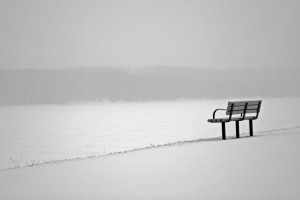
No Comments
Saturday, January 5th, 2013

Welcome to the first of our free gifts for the New Year. Our Creativity Manifesto is a collection of 8 tips, which remind you of the need to put creativity on the map in 2013 and invest regularly in your own creativity.
Right now the world belongs to the right-brained creative’s who are adaptable and flexible and many of you are sitting on an untapped resource by not unleashing your creativity in all areas of your life.
Whether you work in the corporate, world or work for yourself we all need the skill and ability to think outside the box. Creativity does not belong to the artist gurus of this world, it belongs firmly and squarely in the hands of the likes of you and me but we need to give ourselves permission to use it.
Our Manifesto contains simple guidelines and reminders as to how you can bring your own creative life force alive in your day-to-day actions and routines. Bill Moyers captures this when he wrote, “Creativity is piercing the mundane to find the marvelous.”
Putting this Manifesto together and the other two in the series (Writing & Nature) is an example of my own creativity at work.
I noticed the feelings and sensations created when distilling my experiences and knowledge about creativity into these tips.
I felt excited in the moment, enjoying the process of handing over the list to our designer who put her own magical creativity to work to come up with the design for each of the Manifesto’s in our series.
I wanted a different way to share my thinking around creativity and engaging in my own creativity helped me to define that.
I’ve launched the Creativity Manifesto on the Coaching blog because I believe that creativity and expressing ourselves creatively is an essential part of our personal and professional development and can often be overlooked in pursuit of higher, perceived, loftier goals.
I believe that by developing your own creative intelligence just like any other business skill will take you further than you could imagine in the coming months ahead.
Creating our series of Manifestos (we have two more on offer Writing & Nature) in the gaps and the spaces in between the mundane tasks in my day left me feeling satisfied and fulfilled. Making the space to play with my creativity in this way generated ripple effects in other areas of my work life in very positive ways.
Often what’s lacking from your life and work is that creative life force or creative edge. In 2013 without creativity on tap you won’t get far without it.
You can download your printable Creativity Manifesto here
or click here to download the Creativity Manifesto Wallpaper for your desktop.
You’ll find the Writing Manifesto on the Writing blog and the Nature Manifesto on the Trees blog
Welcome to your creative world.
No Comments
Thursday, December 6th, 2012
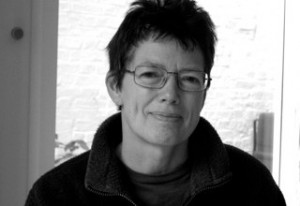 This afternoon whilst checking my Facebook messages which had not been checked for over six weeks I found out that one of my former coaching clients Reen Pilkington had sadly passed away last month from Parkinson’s disease. It was sad news for me for a number of reasons which made me think about sharing the news on my blog.
This afternoon whilst checking my Facebook messages which had not been checked for over six weeks I found out that one of my former coaching clients Reen Pilkington had sadly passed away last month from Parkinson’s disease. It was sad news for me for a number of reasons which made me think about sharing the news on my blog.
I don’t ever underestimate how special it is to work with individuals in my work as a coach. For me it is always an honour and a privilege when anyone places their trust and their faith in me to grant me permission to walk alongside them on this extraordinary journey of life.
Reen was an extraordinary individual, possessing a quiet strength, an amazing eye for photography especially nature, landscapes, portraits and her skills as a film maker along with the fantastic work she did at Roots and Shoots in the heart of Kennington.
We worked together for 18 months in early 2000 and then contracted for further sessions a year or so later. In that time I watched as Reen made a name and a brand for herself as a photographer and committed even more deeply to her art and her creativity.
Reen was a gentle soul whose eyes oozed kindness and compassion. She had a clear and clean spirit which always felt refreshing and energising. I always felt calm and peace in our conversations with each other.
One of the best gifts Reen gave me after our work had been completed was a series of photo shoots at her home. As a result one of the images from that shoot I’ve used for years as one of my main public profile shots. I loved the image Reen took of me because despite being in a difficult place at that time in my life she captured my happiness. Ironically in November of this year at around the possible same time of her passing I decided to no longer use this image and removed it from my Twitter profile page.
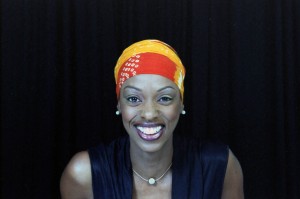
It goes without saying that in these moments we deeply feel the fragility of life and are reminded of how quickly we can depart from this life as we know it.
As I said on Sunday evening at a 50th birthday celebration where I hosted the speeches, let’s not forget to affirm each other now in the present, in our daily interactions, on the job, at home rather than wait for when the person is no longer here to say how great they were or how much we loved and cared about them.
I hold onto the memories that I experienced Reen in this unique way in our coaching work together during her life journey. I can only imagine the enormous body of exquisite photographs Reen has left as a legacy of her work and time with us. I hope these images offer comfort to family, friends and loved ones at this time.
I send my love and condolences to her son, her partner, her family and close friends.
In loving memory of Reen Pilkington.
No Comments
Thursday, December 6th, 2012
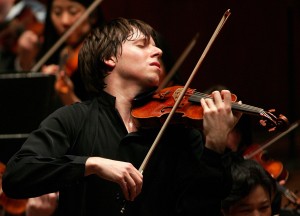 One of the many skills of a great coach is the ability to be observant. This means the ability to really listen and tune in beyond what is said to what is not said or to notice the variations in the way things are said.
One of the many skills of a great coach is the ability to be observant. This means the ability to really listen and tune in beyond what is said to what is not said or to notice the variations in the way things are said.
When we allow ourselves to remain curious and open in our observations we are more likely to see and feel more. One way of developing this skill is to become more observant and aware of people and your surroundings as you go about your daily activities and routines. This is a great training ground for coaches particularly those new to coaching.
To extend your capacity to observe start experimenting with noticing the people around you, how they walk, talk, engage with each other, dis-engage or the variations in the tones and pitch of voice?
Pay attention to your environment, what does the energy feel like in the different spaces you inhabit as you go through your day? What do you notice about the buildings you are working or living in?
When we observe we are awake, in tune to the senses and activating the ability to see beyond the visible.
This reminded me of the story of Joshua Bell.
One cold January morning in 2007 violinist Joshua Bell started to play the violin during the rush hour in a Washington metro station. Over the course of 45 minutes he played six Bach pieces, some were the most difficult pieces to write.
In the space of the first three minutes one middle aged man slowed down his pace and paused for a few seconds but was soon on his way. I wondered what he heard in that moment.
Following this one woman threw in the first dollar but with no eye contact and just kept walking.
Next one passer by physically stopped and leant against a wall for a few seconds but soon turned to his watch and scurried away on his way for work.
Virtuoso Violinist Joshua Bell got his greatest attention from a 3 year old boy despite his mother tugging him away. But to show his engagement in the beautiful music he was hearing the little boy kept turning his head and looking back at the spot where Bell stood playing. Apparently several other children did the same but were moved on quickly by their parents.
A total of six people stopped to listen to Bell play. A total of twenty people left money, but made little eye contact and kept moving at their same pace.
What made this incident even more poignant was the fact that Joshua Bell is one of the best musicians in the world and in that subway he played one of the most intricate pieces ever written on a violin rumoured to be worth 3.5 million.
How could so many people have missed this wondrous moment? Did only six people and a handful of children really hear something different in Bell’s music?
I found out during my research around the story that busking is not permitted on the Metro so a violinist’s presence was something out of the ordinary.
Was the rush to work so rigid and addictive that thousands literally did not pick up on, hear or observe that Bell’s playing was somehow different, exquisite or even dare I say it beautiful and deserved to be stopped and listened to?
And from one of the questions posed by a reader after the story went viral: “If they missed Bell how much more was being missed in their daily lives?”
Sometimes you may arrive at your coaching sessions with the same sense of busyness. You’re there in body but your thoughts feel scattered. In this place you do not have the observing eye, the capacity for presence, and the ability to really see and notice with that open and curious mind.
The more you’re present in your everyday interactions outside of the coaching room the more this is then transferred through your ability to really see and be in the coaching space.
I have found on more than one occasion that an observation of a small comment, facial expression or sound made by the client turns into a significant moment in our conversation.
A fun way to increase your ability to really see and observe is to draw. Try this experiment adapted from Frederick Franck’s book, The Zen of Seeing: Seeing/Drawing as meditation.
Find a space to sit a room or space outdoors will be fine. You will need a blank piece of paper, preferably unlined and a pencil.
“ Now, let your eyes fall on whatever happens to be in front of you. It maybe a table, a chair or a group of people talking. Close your eyes for the next five minutes…..
“ Now, open your eyes and focus on whatever you observed before. Look it in the eye, until you feel it looking back at you. Feel that you are alone with it, that this is the most important thing right now. You are no longer looking, you are SEEING…
“Now, take your pencil loosely in your hand, and while you keep your eyes focused allow the pencil to follow on the paper what the eyes perceives. Don’t check what gets onto the paper. Don’t let your eye wander from what it is seeing, and don’t lift your pencil from the paper.”
1. What’s different about the quality of your observation and seeing now?
And by the way, apparently Bruce Springsteen did a similar experiment twenty years prior and no one paid much attention to him either.
Photo by Chris Lee
No Comments
Friday, November 30th, 2012

Even after all this time
The sun never says to the earth, “You owe me.”
Look what happens with a love like that.
It lights up the whole sky.
Hafiz (14th century Persian Mystic and poet)
Poetic Inquiry
1. What is the kindest thing someone has ever done for you where they expected nothing in return?
2. What was the kindest thing you’ve ever done for someone for which you expected nothing in return
3. Today, right now, this very moment what are you truly grateful for?
No Comments
Monday, November 26th, 2012
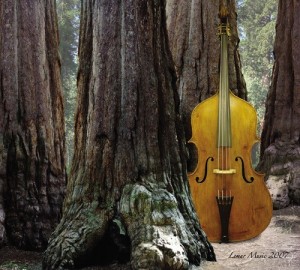
He is a drunk leaning companionably
Around a lamp post and doing up
With intermittent concentration
Another drunk’s coat
He is a polite but devoted Valentino
Cheek to cheek, forgetting the next stop
He is feeling the pulse of the fat lady
Or cutting her in half.
But close your eyes and it is sunset
At the edge of the world. It is the language
Of dolphins, the growth of tree roots
The heart beat slowing down.
- John Fuller Collected Poems 1996 tfl.gov.uk/poems
This was the poem that greeted me last week on the Jubilee line tube on my way to an early morning supervision session in central London. Standing in a packed tube carriage I was not in the right position to start fiddling around with my iphone so my eyes landed on the red and white advert which showcases the collection of over 3,000 poems publicized on the tube network.
The selection of poems is changed three times a year and includes diversity of poems including, classical, contemporary, international and up and coming poets. It has been an excellent way of introducing the public to poetry.
With the poem right in front of me I took my time and read through each line and very quickly found myself immersed in the poem, word-by-word, line-by-line. I was pulled in. Not only was I sinking into the poem I felt moved by it. I lost track of time and where I was. It felt like the more I engaged with the poem the more I was clearing a space in my mind. The words soothed me, relaxed me, and opened me out. I felt the world inside me open out and expand. An emptying of the previous days to do list and the list of the day ahead seemed a distant away from where I stood and how I felt in that moment.
Two lines in particular mesmerized me and I began a meditation into the two lines lost in my own personal translation of what those words meant to me.
“At the edge of the world. It is the
Language of dolphins, the growth of the tree roots.”
I became so engrossed I missed the announcement of the arrival at my stop Baker Street and bundled myself out of the carriage doors just as the doors were about to close.
My encounter with the poem took all of 10 minutes for the poem to open up a space in me. It was the perfect clearing of my mind for my supervision session and a practice I set an intention last week to integrate into my preparation for future coaching and supervision sessions.
Turned out this was not just what my psyche needed. My supervision session weaved a dance of natural curves and actions that had us both reveling at what we both gained from our time together.
Reading a poem before I go into a coaching or supervision session has now been added to my list of ways of clearing my mind and thoughts and going through the process of emptying.
1. What do you do to empty yourself before a coaching or supervision session?
2. What activities open you out?
3. What practices do you do to either prepare yourself for your coaching and supervision whether you’re receiving coaching or you’re someone offering coaching or supervision?
No Comments
